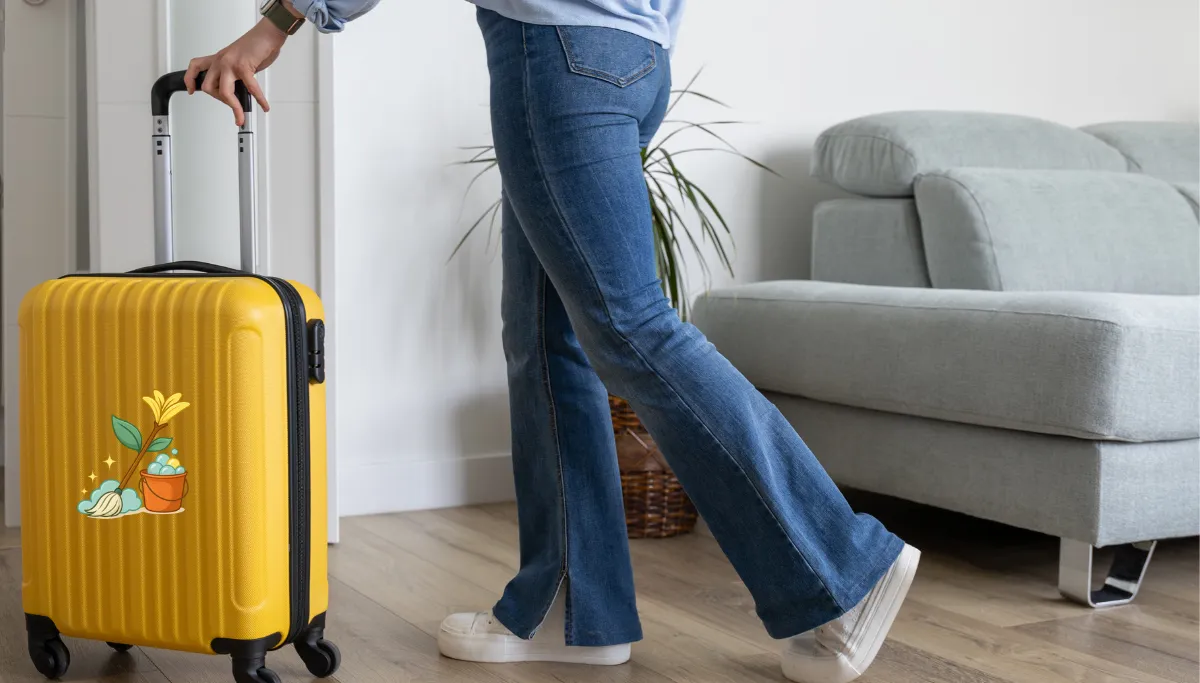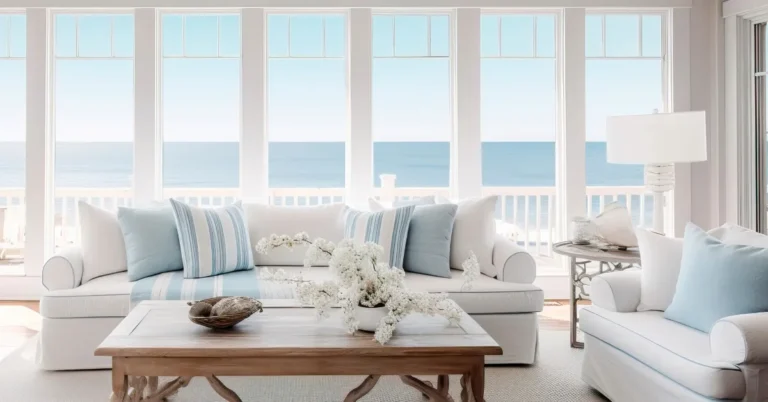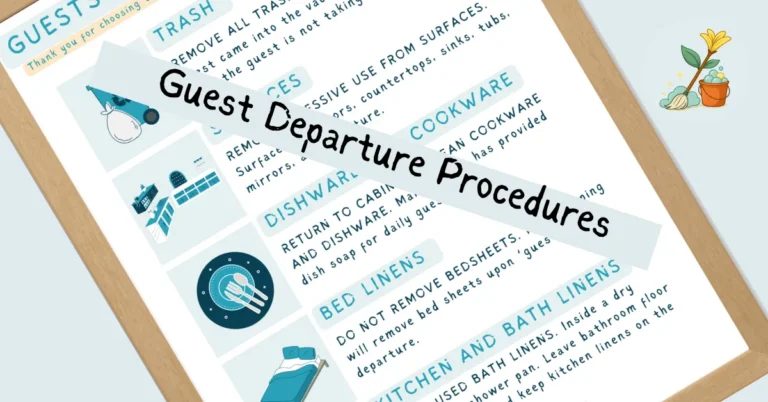5 Essential Departure Procedures for a Flawless Rental
Guest Departure Procedures – Setting Clear Expectations
Charging a cleaning fee doesn’t mean guests can leave a mess. Clear guest departure procedures help maintain cleanliness, reduce turnover time, and ensure a smooth transition for the next stay.
The Importance of Guest Departure Procedures
Charging guests a departure cleaning fee was originally implemented with the best intentions. The goal was to encourage guests to take responsibility for maintaining the condition of the rental during their stay while also helping offset the costs of laundry and linens. However, the misinterpretation of the cleaning fee has led to an increasing number of guests assuming it grants them permission to leave excessive messes behind. As one guest candidly stated, “I paid a cleaning fee so that I could leave all my trash, dirty dishes, damaged linens, and popsicle-covered walls.”
To prevent such misunderstandings, it is essential to establish clear guest departure procedures and communicate them effectively. These procedures should be displayed inside the vacation rental and outlined in the guest rental agreement to ensure compliance and maintain the highest property standards.
Visit our About Us page to learn how Destin Housekeeping Services became a trusted name in vacation rental operations.
The Proven Effectiveness of Departure Procedures
Housekeeping teams have been implementing structured guest departure procedures for over a decade, significantly reducing the number of trashed units. Simple yet effective guidelines, such as requiring guests to remove trash, have minimized pest control issues and helped guests collect all their belongings before departure. Additionally, specific instructions regarding linens and dishwashing have streamlined the cleaning process, improving efficiency and overall property upkeep.
Standard Guest Departure Procedures
1. Remove All Trash
Guests are required to dispose of all trash before checkout. What constitutes trash? Anything the guest brought into the vacation rental that is not being taken home. Removing trash significantly reduces odors and deters pests, helping maintain the property’s cleanliness between turnovers.
2. Place Soiled Bath Linens in the Tub or Shower
Guests should gather all used bath linens and place them inside the nearest dry tub or shower. The emphasis on “dry” was added after experiencing guests soaking linens in water, making them unnecessarily heavy. Housekeeping staff handle 25-pound bags of linens—not 50-pound saturated loads. Bath rugs and kitchen linens should remain in place, as including them in the linen pile adds unnecessary complexity.
3. Do Not Remove Bed Sheets
Through experience, we have learned that having guests strip bed sheets creates more challenges than benefits. When guests remove their own bedding, it often results in piles of linens on the floor, leading to issues with hair, dust, and misplaced items. Additionally, guests frequently take it a step further by removing mattress pads and pillow protectors, disrupting inventory control and making it harder to assess linen conditions. Leaving the bed sheets in place allows housekeeping to quickly inspect for damage and efficiently manage linen replacements.
4. Return Dishware and Cookware to Cabinets, Clean
Unlike hotels, vacation rentals do not offer daily maid service. Guests are expected to clean and return their dishware and cookware to cabinets before departure. Failing to do so can lead to unsanitary conditions, pest infestations, and improper dish storage inside cabinets. Providing guests with only one or two dishwasher detergent pods is a recipe for failure—ample dish soap should be supplied to encourage guests to maintain daily dishwashing.
5. Wipe Down Excessive Spills and Surfaces
Guests are expected to clean up any excessive spills during their stay. While minor messes are anticipated, large spills such as a pitcher of Kool-Aid or sticky popsicle residue across furniture and walls should be wiped up by the guest. Keeping surfaces reasonably clean ensures a more efficient turnover and a property that remains in pristine condition for the next guest.
Why Guest Departure Procedures Matter
Without clear departure procedures, guests may assume that the cleaning fee absolves them of any responsibility for maintaining the property’s cleanliness. However, by implementing and clearly communicating these expectations, owners and property managers can:
Minimize excessive messes and reduce turnover time.
Prevent pest infestations caused by food debris and garbage.
Improve inventory control for linens and kitchenware.
Ensure a consistently high-quality experience for every guest.
Housekeeping teams operate with defined procedures to keep vacation rentals in pristine condition—guests following simple departure guidelines contribute to this seamless process.
Watch the Video
This post includes a detailed video with a voice-over explaining how guest departure procedures are displayed inside vacation rentals and how they assist cleaning teams in maintaining high standards. Watch now to see how these procedures improve efficiency and guest satisfaction!
By implementing these clear and structured departure procedures, vacation rental owners can ensure a smooth and efficient turnover process while maintaining the highest quality standards for future guests.
Why Onboarding is Essential for a Successful Vacation Rental
Proper onboarding ensures your vacation rental is fully stocked, deep cleaned, well-appointed, and guest-ready from day one. Learn more about our Onboarding Processes.
Got Questions? Explore Our Vacation Rental Cleaning FAQs
Have questions about our cleaning services, linens, or departure procedures? Check out our FAQ page for important answers.
DBPR – GUIDE TO VACATION RENTALS
Vacation rentals that do not have the facilities to comply with the dish-water requirement must post a notice informing guests that the dishes and glassware have not been sanitized according to public food service establishment standards. Read more at DBPR about bed linens and cleaning regulations.




